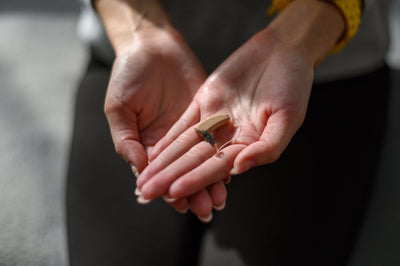Everything That You Need to Know About Hearing Aids
Hearing aids have changed the lives of millions of people all over the world. Indeed, no longer do people have to cope with their loss of hearing as hearing aids can help make up for hearing loss. Considering how important they are, it’s rather disappointing how little people actually know about these wonderful devices. This is why we thought it would be useful to put together a brief article on this subject. If this is something that you’re interested in learning more about, read on as we break down everything that you need to know about hearing aids.
How Do Hearing Aids Work?
Hearing aids help people who have hearing loss by amplifying sound vibrations. This type of hearing loss usually happens when the small sensory cells in the inner ear, called hair cells, are damaged. The damage could be from disease, aging, or an injury from noise or certain medicines. When the hearing aid amplifies the sound vibrations, the surviving hair cells detect the larger vibrations. Then, the hair cells convert the vibrations into neural signals. The neural signals go to the brain. If a person has more damage to their hair cells, they have more severe hearing loss. They would need a hearing aid with more amplification. However, there is a limit to how much amplification a hearing aid can provide. Also, if the inner ear is too damaged, the hearing aid would not be effective.
Who Needs Hearing Aids?
If you are experiencing hearing loss and think you could benefit from a hearing aid, consult with your physician. They may refer you to an otolaryngologist or audiologist. Otolaryngologists are physicians who specialize in disorders involving the ear, nose, and throat. They will investigate the cause of your hearing loss. Audiologists are hearing health professionals who identify and measure hearing loss. They will administer a hearing test to assess the type and degree of loss.
What Are the Different Types of Hearing Aids?
Behind-the-ear (BTE) hearing aids are made up of a hard plastic case that goes behind your ear and is connected to a plastic earmold that fits inside your outer ear. The electronic parts of the hearing aid are in the case behind your ear. Sound from the hearing aid goes through the earmold and into your ear. These hearing aids can be used by people of all ages to help with mild hearing loss.
In-the-ear (ITE) hearing aids fit snugly inside the outer ear and are suited for those with mild to severe hearing loss. The case holding the electronic components is usually made of hard plastic, and some models might have features like a telecoil installed. A telecoil is a small magnetic coil that allows the user to hear sound through the hearing aid's circuitry instead of its microphone. This makes it easier to hear conversations over the telephone. A telecoil also helps people hear in public places that have special sound systems, called induction loop systems, installed. Induction loop systems can typically be found in many places, like churches, schools, airports, and auditoriums. ITE aids are not usually worn by young children because the casings need to be replaced often to accommodate the child's growing ear.
Canal hearing aids come in two styles: in-the-canal (ITC) and completely-in-canal (CIC). They are small and fit snugly into the ear canal, making them difficult to adjust and remove. They also have limited space for batteries and additional devices, such as a telecoil. Canal hearing aids are not recommended for young children or for people with severe to profound hearing loss.
Conclusion
We hope this article proves to be useful when it comes to shedding some light on hearing aids and how they work. This information should help deepen your appreciation of these devices. While this may seem overwhelming at first, the information that we’ve laid out above should be enough to give you good foundational knowledge on hearing aids. Be sure to keep everything you’ve learned here in mind the next time you’re looking to purchase hearing aids.
Here at HearGlow, we aim to make hearing aids more accessible for the many millions around the world who are losing their hearing. We have come on the scene to help reduce those costs by making hearing devices more affordable & accessible for the many millions around the world who are losing their hearing. If you need hearing aids, we’ve got you covered! Check what we have to offer!
Related Articles



